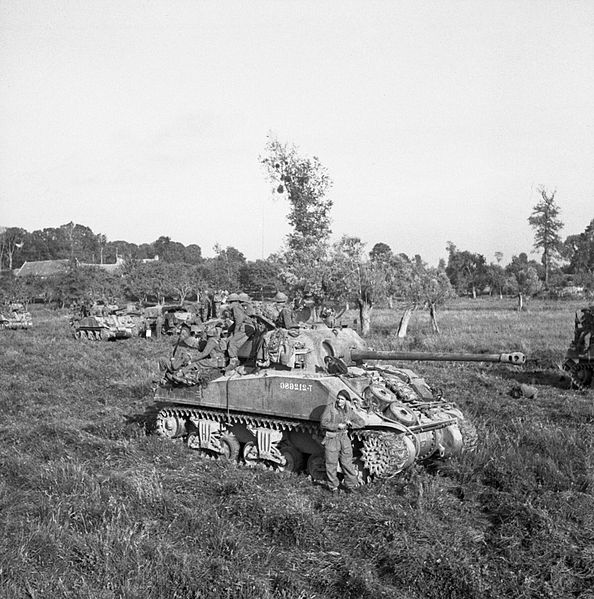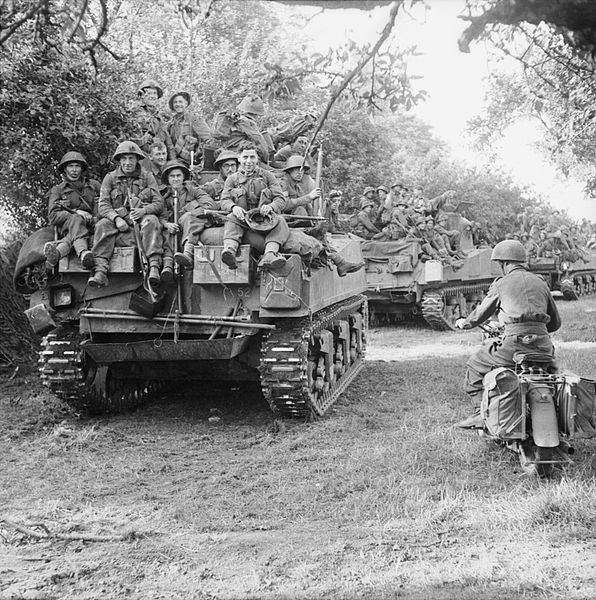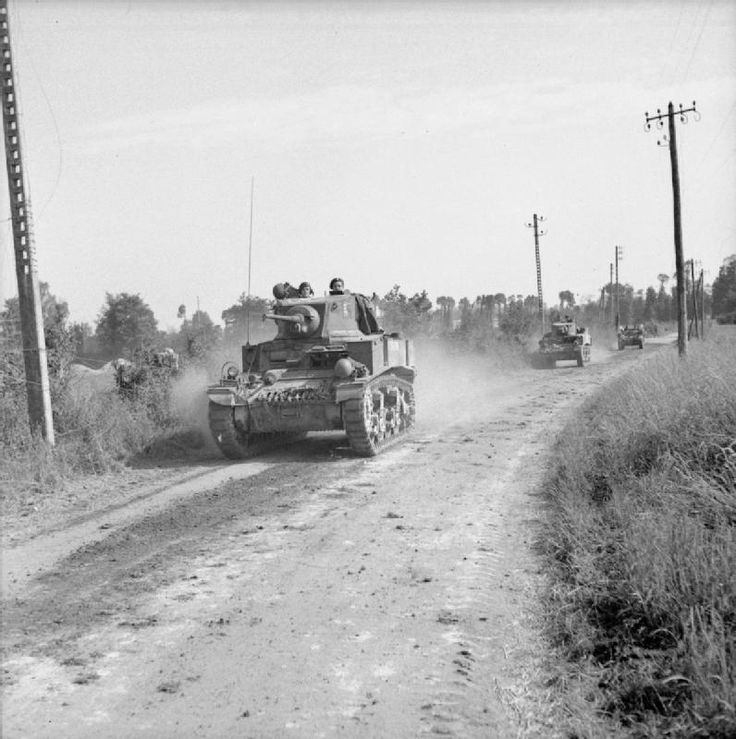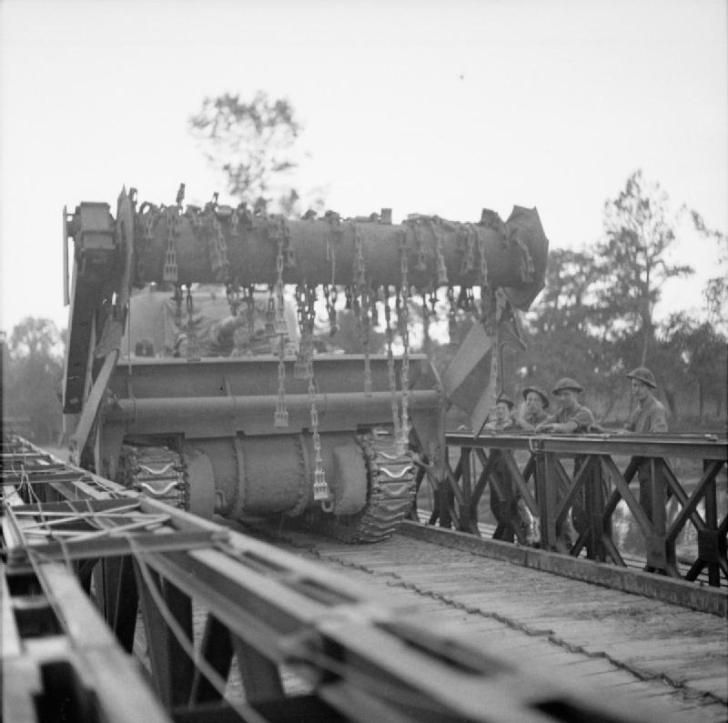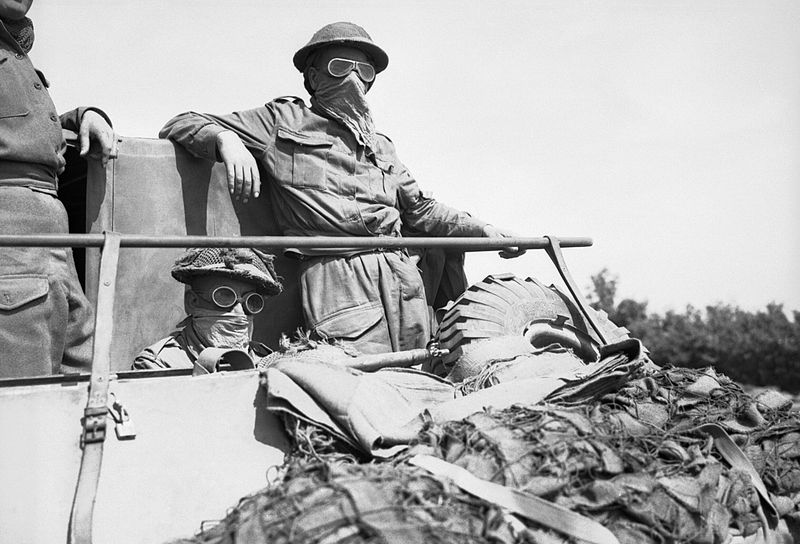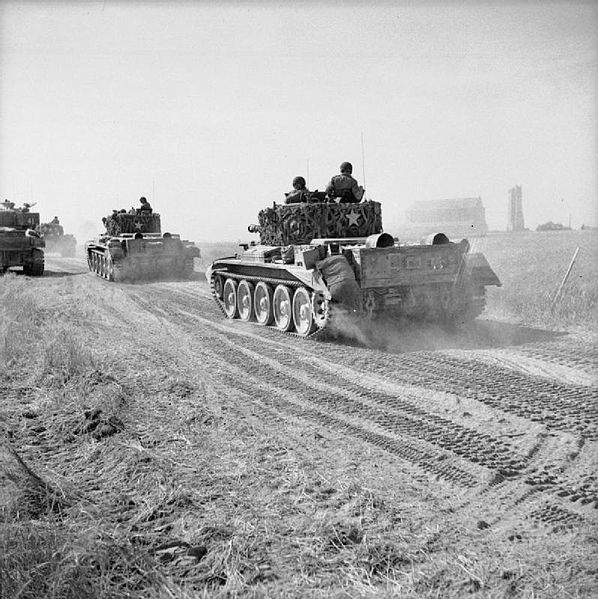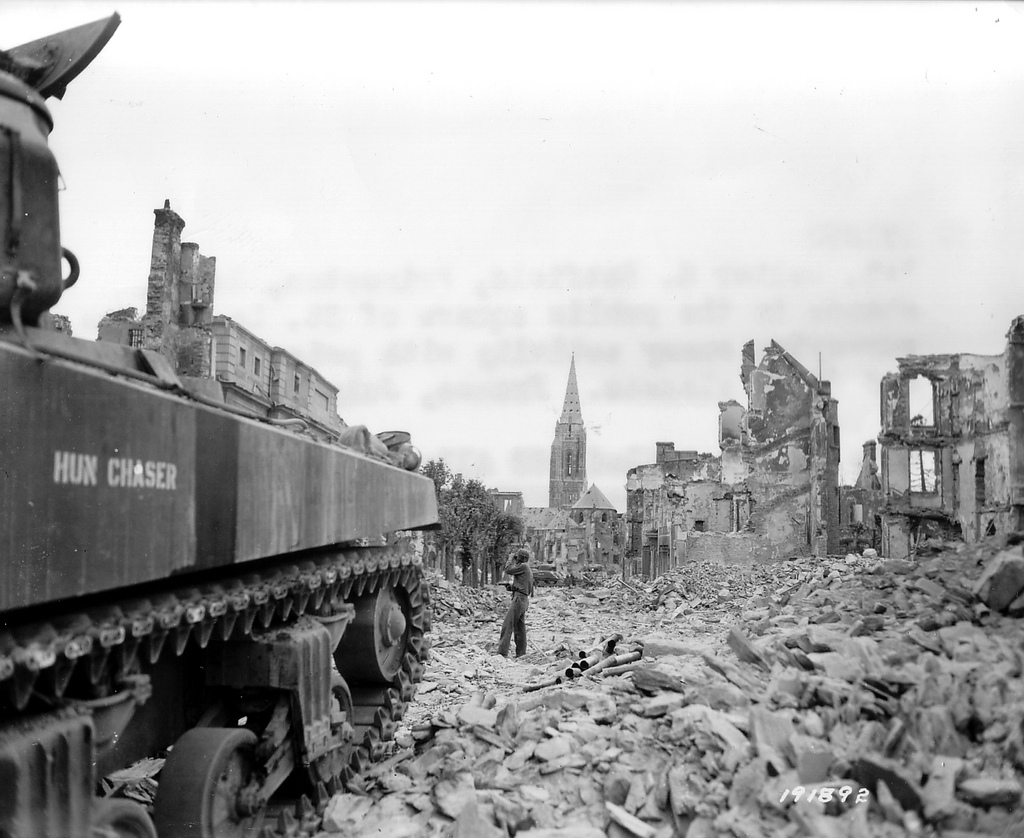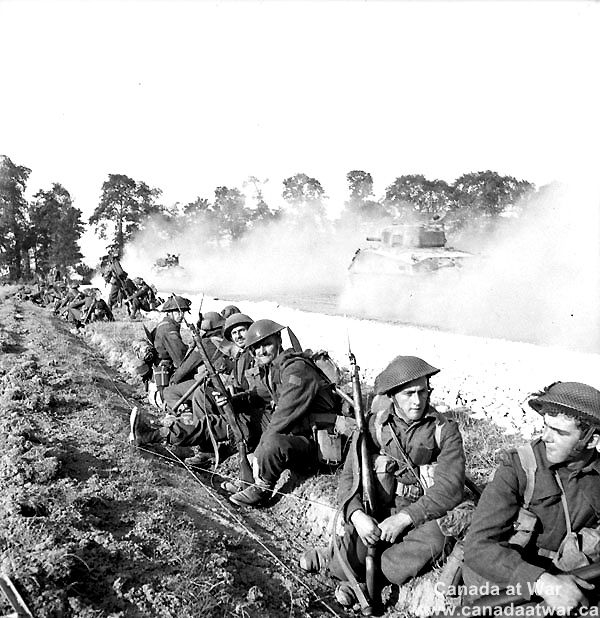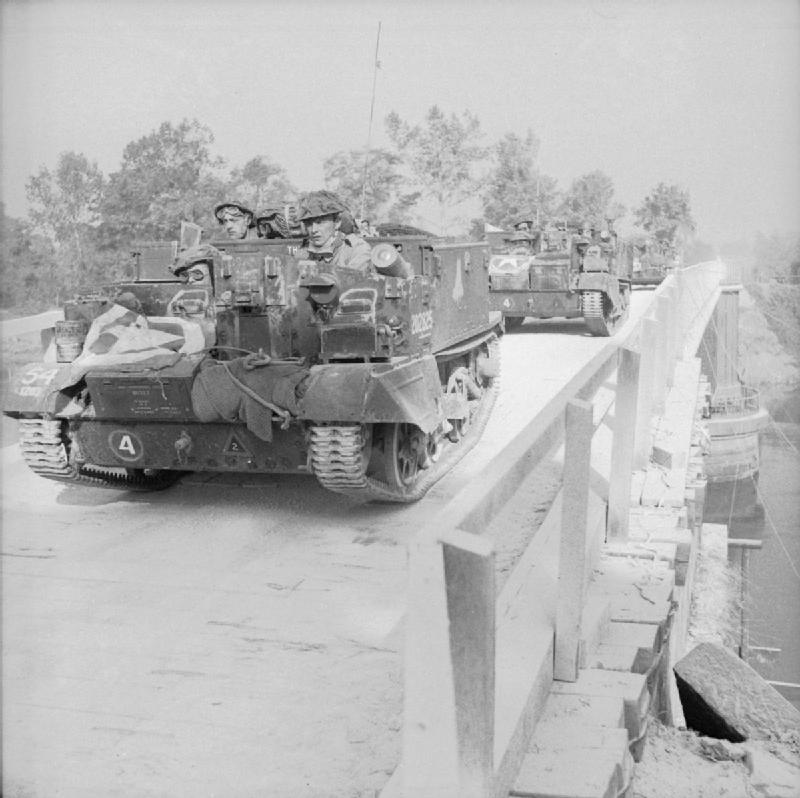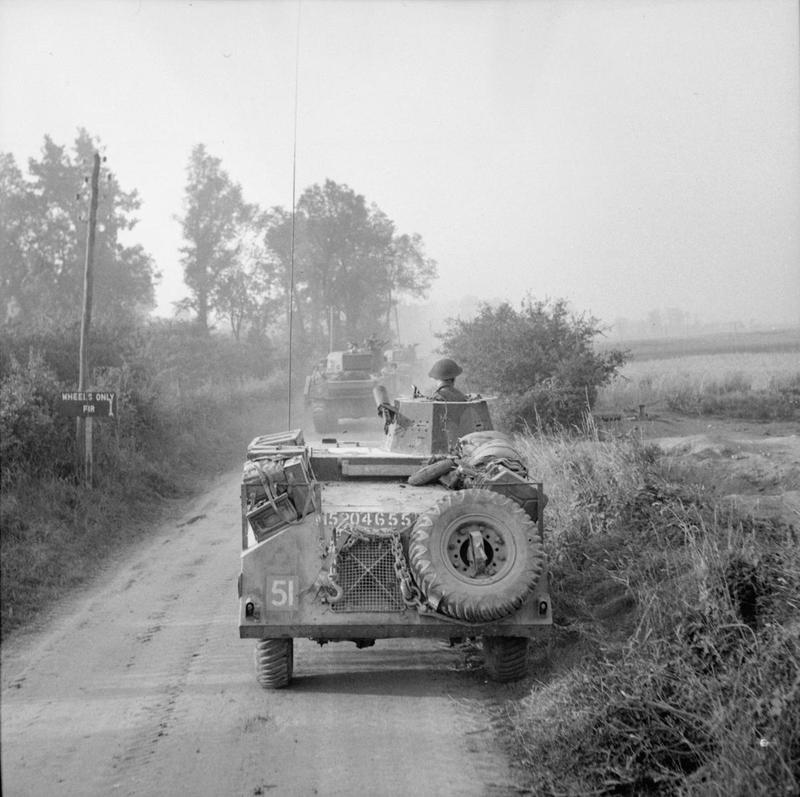Air Operations, Carolines
- FEAF B-24s attack the Yap Atoll and Sorol Island.
- 25 VII Bomber Command B-24s attack the Truk Atoll.
Air Operations, CBI
BURMA- 9 10th Air Force B-25s attack Myitkyina and Naungtalaw.
- 16 10th Air Force P-51s support Allied ground troops at Pyindaw.
- 25 P-40s attack targets in the Myitkyina area.
- 8 P-47s attack Theinin.
- More than 30 14th Air Force P-40s attack shipping between Chaling and Hengyang.
- 13 P-40s attack a fuel dump on the rail line through Kangtsun-i.
- 16 P-51s and P-40s attack river traffic between Lienchiangkou and Sainam.
- 3rd CACW Fighter Group P-40s down a Ki-43 'Oscar' fighter and a Ki-44 'Tojo' fighter in an engagement in the Yellow River area at 1220 hours.
Air Operations, Europe
RAF BOMBER COMMANDDaylight Ops:
- 942 aircraft are sent to bomb 5 fortified villages in the area east of Caen through which British 2nd Army troops are about to make an armored attack, Operation GOOD WOOD. Included in the aircraft total are 667 Lancasters, 260 Halifaxes and 15 Mosquitos. The raids take place at dawn in clear weather. 4 of the targets are satisfactorily marked by Oboe, and at the target where Oboe fails, the Master Bomber Squadron Leader E. K. Creswell, and other Pathfinder crews use visual methods. More than 5,000 tons of bombs are dropped on the targets. Elements of two German divisions, the 16th Luftwaffe Field Division and the 21st Panzer Division, are badly affected by the bombing, the Luftwaffe Division particularly so. Operation GOODWOOD makes a good start. This raid was either the most useful or one of the most useful of the operations carried out by Bomber Command in direct support of the Allied armies. The aircraft bomb from medium heights, 5,000-9,000ft, but army artillery and naval gunfire subdue many of the flak batteries and only 6 aircraft - 5 Halifaxes and 1 Lancaster - are shot down. No German fighters appear. Allied air superiority over the battlefield by day is complete.
- 99 Halifaxes, 6 Lancasters and 5 Mosquitos of Nos. 4, 6 and 8 Groups attack the railway yards at Vaires, but no bombing results are filed.
- 2 Halifaxes are lost.
- 111 Halifaxes, 77 Lancasters and 6 Mosquitos of Nos. 1, 6 and 8 Groups attack the synthetic oil pland at Wessling. A useful German report from Wesseling shows that this was a very successful raid and a credit to the Pathfinder marking. Approximately 1,000 high-explosive bombs fall inside the area of the plant in 20 minutes. 20 per cent of the installations are destroyed but, because some important buildings are particularly hard-hit, the loss of production is greater than this figure. 600 workmen are present on the night shift but they have good air-raid shelters and only 3 are killed. The nearby town is also hit and 151 houses are destroyed, many of them being in the estate for the oil plant workers. The people here must also have been provided with good shelters because only 8 German people are killed. The local report stresses that no children of school age are among the casualties. The local school had been evacuated to Silesia a few weeks earlier. Foreign workers and prisoners of war in a nearby camp probably had poorer air-raid shelters; 22 foreign workers and 9 prisoners of war die there.
- 157 Lancasters and 13 Mosquitos of Nos. 1 and 8 Groups attack the oil plant at Scholven/Buer. This is also a successful raid. The local report says 550 bombs fall in the plant area, although 233 of them do not explode. Production comes to 'a complete standstill for a long period'.
- 4 Lancasters are lost.
- 253 Lancasters and 10 Mosquitos of Nos. 1, 3, 5 and 8 Groups attack railway junctions at Aulnoye and Revigny. Both targets are hit and the railway lines to the battle front are cut.
- 2 Lancasters are lost on the Aulnoye raid, but German fighters hit the No. 5 Group on the Revigny raid and 24 Lancasters are shot down. No. 619 Squadron from Dunholme loses 5 of its 13 Lancasters taking part in the raid.
- 51 Halifaxes, 9 Mosquitos and 2 Lancasters of Nos. 4 and 8 Groups attack the flying bomb launch site at Acquet, but photographs reveal no new damage is caused.
- 2 Halifaxes are lost.
- Support and 115 aircraft including 86 Wellingtons, 19 Stirlings and 10 Halifaxes from Heavy Conversion and Operational Training Units make a diversionary sweep over the North Sea.
- 22 Mosquitos are sent to Berlin and 6 to Cologne, 8 Halifaxes lay mines in the Frisians, 36 aircraft are on Resistance operations, and there are 76 Mosquito patrols and 20 RCM sorties.
- 1 Mosquito from the Berlin raid and 2 Halifaxes from Resistance operations are lost.
FRANCE:
- During the morning, 570 2nd and 3rd Bomb Division B-24s attack several defended towns in the Caen area of Normandy in direct support of Allied ground forces.
- 1 B-24 is lost
- Using radar, a total of 216 3rd Bomb Division B-17s attack an oil refinery at Hemmingstedt, the city of Kiel, and the city of Cuxhaven (target of opportunity).
- 414 1st Bomb Division B-17s visually attack the Luftwaffe experimental facilities and Peenemunde and Zinnowitz.
- 20 B-17s that fail to locate their primary target attack a marshalling yard at Straslund.
- 3 B-17s are lost
- A total of 419 VIII Fighter Command fighters provide escort for the B-17s formations over Germany. The escort pilots down 10 Ju-88s and 7 Luftwaffe fighters over Germany between 0900 and 0920, in the Rostock, Warnemunde, and Wismar areas.
- 3 P-51s and 2 pilots are lost
FRANCE:
- Acting in conjunction with the 8th Air Force heavy bombers, IX Bomber Command B-26s and A-20s also attack German-held towns in the Caen area.
- During the afternoon, IX Bomber Command B-26s and A-20s attack rail and road bridges servicing the battle area.
- Throughout the day, 9th Air Force fighters and fighter-bombers strafe, bomb, and rocket gun emplacements and other military targets in the battle area and throughout northern and western France.
- USAAF fighter pilots down 35 Luftwaffe fighters over France between 0915 and 1025 hours.
ITALY:
- 12th Air Force medium bombers are grounded by bad weather, but a limited number of XII TAC fighter-bombers are able to attack communications targets, gun emplacements, rail lines, and several bridges in or near the battle area.
FRANCE:
- More than 500 15th Air Force B-17s and B-24s attack a jet-aircraft factory at Manzell and the airdrome at Memmingen. In this attack, the 5th Heavy Bomb Wing's 483rd Heavy Bomb Group loses 14 B-17s during massed attacks against its formations by an estimated 200 Luftwaffe fighters.
- Between 0950 and 1105 hours, pilots of the 1st, 31st, 52nd and 332nd Fighter Groups down 39 Bf-109s and FW-190s between Udine, Italy, and southern Germany.
- 15th Air Force B-17s and B-24s attack a rail bridge.
Air Operations, Marianas
318th Fighter Group P-47s attack Pagan and Tinian.
[Air Operations, New Guinea
V Fighter Command fighter-bombers attack numerous targets between Aitape and Wewak.
[Eastern Front
Troops of the 1st Ukraine Front capture Brody, east of Lvov, in Poland. In the sector immediately to the north, armored columns from the 1st Belorussian Front advance from Kovel toward Lublin. The 3rd Baltic Front, on the offensive south of Lake Peipus, threatens Ostrov and Pskov, advanced strongpoints which until now the Germans have maintained at a high cost.
West of Grodno the Russians have already nearly reached the East Prussian border, but they are halted by a violent counterattack by Model's armies near Augustow.
CENTRAL SECTORThe 31st Army crosses the East Prussian border and reaches Augustow, but ferocious German counterattacks halt the Soviets. The fighting has reached German soil. As the Russian advance slows, Model constructs a thin defense line from Kaunas to Bialystok.
SOUTHERN SECTORThe 8th Guards and 1st Polish Armies attack north of Kovel and break through the German line. To the south, leading units of the 1st Guards Army, pushing down from the north, are just 20 miles from Stanislav. The 4th Tank Army takes Olshantsa during heavy fighting on the road to Lvov. Meanwhile, elements of the 38th Army link up woth the 13th Army to isolate 65,000 men of the XIII Corps west of Brody.
[English Channel
U-672 is attacked by the British frigate HMS Balfour but manages to escape. The submarine is so badly damaged that she is abandoned and the crew takes to dinghies.
| Class | Type VIIC |
| CO | Oberleutnant zur See Ulf Lawaetz |
| Location | English Channel, off Start Point |
| Cause | Depth charge |
| Casualties | None |
| Survivors | 46 |
Italy
The 34th Div opens its final attack against Leghorn. Some units reach the suburbs of the town but the Germans manage to preserve a good part of the garrison. The 91st Div reaches the Arno at Pontedera which is taken.
In the British 8th Army sector, the South African 6th Arm Div of XIII Corps reaches and passes Radda in Chianti, while in the Arno valley the 4th Div and British 6th Arm Div are almost brought to a halt by the first of a series of defensive lines which the Germans have prepared north of Arezzo. The 4th Div, however, reaches Montevarchi, on Highway 69.
The Germans defend Città di Castello desperately against attacks by the British X Coprs. On the east coast the Poles also advance taking Ancona.[ITALY]
[![]()
![]() |
| ![]()
![]() ]
]
New Guinea
Gen Sibert, 6th Division commander, relinquishes command of TF TORNADO to Maj-Gen John C. Persons, the 31st Division commander, in order to take charge of TF TYPHOON, comprising the reinforced 6th Division (less the 20th RCT, attached to the 31st Division), for the Sansapor-Mar operation in the Vogelkop, scheduled for 30 July.
In the Aitape sector, the PERSECUTION Covering Force closes the gap in the Driniumor River line as the Americans capture the west bank of the Driniumor River from the mouth to the village of Afua establishing a continuous defensive line. The Japanese are pushed back both east and west under an attack by the 124th Infantry. The 127th Infantry finishes clearing the region between Koronal Creek and the Driniumor and is moving forward to establish a patrol base on the East Branch, Koronal Creek. In the evening the Japanese attack the 1st Squadron of the 112th Cavalry, South Force, from the right and rear in the Afua area and force it to fall back about 250 yards.
[Norwegian Sea
U-742 is spotted on the surface by Catalina 'Z' of No 210 Squadron RAF. The U-boat crew began firing at the aircraft damaging the starboard engine. Despite the damage, the aircraft attacked and saw the U-boat disappear after explosions of the depth charges.
| Class | Type VIIC |
| CO | Kapitänleutnant Heinz Schwassmann |
| Location | Norwegian Sea, W of Lofoten Islands |
| Cause | Air attack |
| Casualties | 52 |
| Survivors | None |
Pacific
- The Japanese submarine chaser No. 50 is sunk by the US submarine Plaice (SS-390) south of Honshu, Japan.
- The US submarine attack group TG 17.3, operating near Luzon Strait, attacks a Japanese convoy. The US submarine Sawfish torpedoes the oiler Janbi Maru (5244t), Cobia (SS-245) sinks the Japanese gunboat No.10 Unkai Maru (855t)northwest of Chichi Jima and army cargo ship Nisshu Maru (7785t) west of Chichi Jima.
- The US submarine Lapon (SS-260) sinks the Japanese auxiliary submarine chaser Kubama Maru off the southern end of Palawan and the survey ship No.36 Kyodo Maru (1499t) and auxiliary submarine chaser Kamo Maru northwest of Labuan, Borneo.
- The US submarine Ray (SS-271) sinks the Japanese merchant tanker Janbi Maru (5244t) in the Java Sea north of Bawean Island.
Western Front
St Lô is almost completely taken by units of the US XIX Corps ending the Battle of the Hedgerows.[WF]
The British and Canadians begin a major push from east of the Orne southward in the direction of the high ground beyond Caen. This operation code named GOODWOOD is to become very controversial. It has the object of drawing as many of the German forces as possible into that sector and so reduce German strength in the western sector, where the American divisions are preparing for Operation COBRA, the attempt to break through the enemy lines west of St Lô and capture Coutances, which is scheduled for July 24. Montgomery hopes that it will lead to a break out from Normandy, but even if this difficult aim is not achieved he believes the attack necessary to maintain the established pattern of drawing the German reserves to the British rather than the American sector. Montgomery has made some unfortunate, extravagant comments on the prospects for GOODWOOD (notably in arguing for heavy bomber support) which will backfire when in fact there is no breakthrough.
More than 2,200 planes are involved in the massive bombardment which precedes the operation, including 1,000 RAF heavy bombers which drop more than 7,000 tons of bombs. The scale of the preparation does much to disorganize and demoralize the defense, and at first the attack goes well. Gradually severe traffic congestion problems develop in the rear. There are only 4 bridges available over the Orne and the Caen canal and in the dust raised by the bombardment and the advance the vehicles of the attacking and following divisions quickly become mixed and misdirected.
The Canadian II Corps cross the Orne southwest of Caen and its 3rd Div captures Colombelles and Giberville, northeast of the city. The British VII Corps attacks in force from the west and after a strenuous battle wi the divisions of the I Panzer SS Group reaches the line Hubert-Folie-La Hogne-Cagny, south of Caen.[CAEN]
[Images from July 18, 1944
|
|
|
|
|
|
|
|
|
|
|
|
